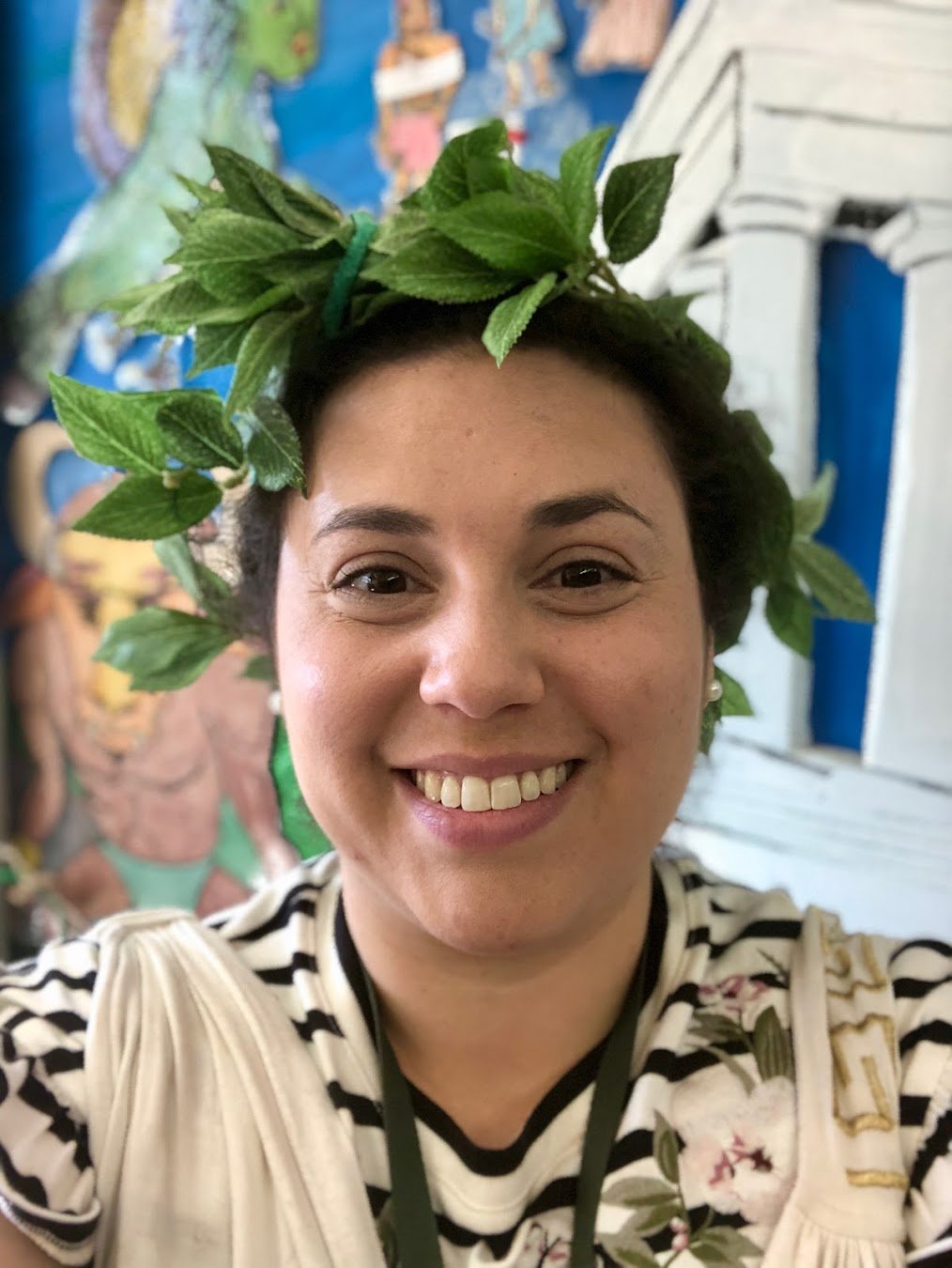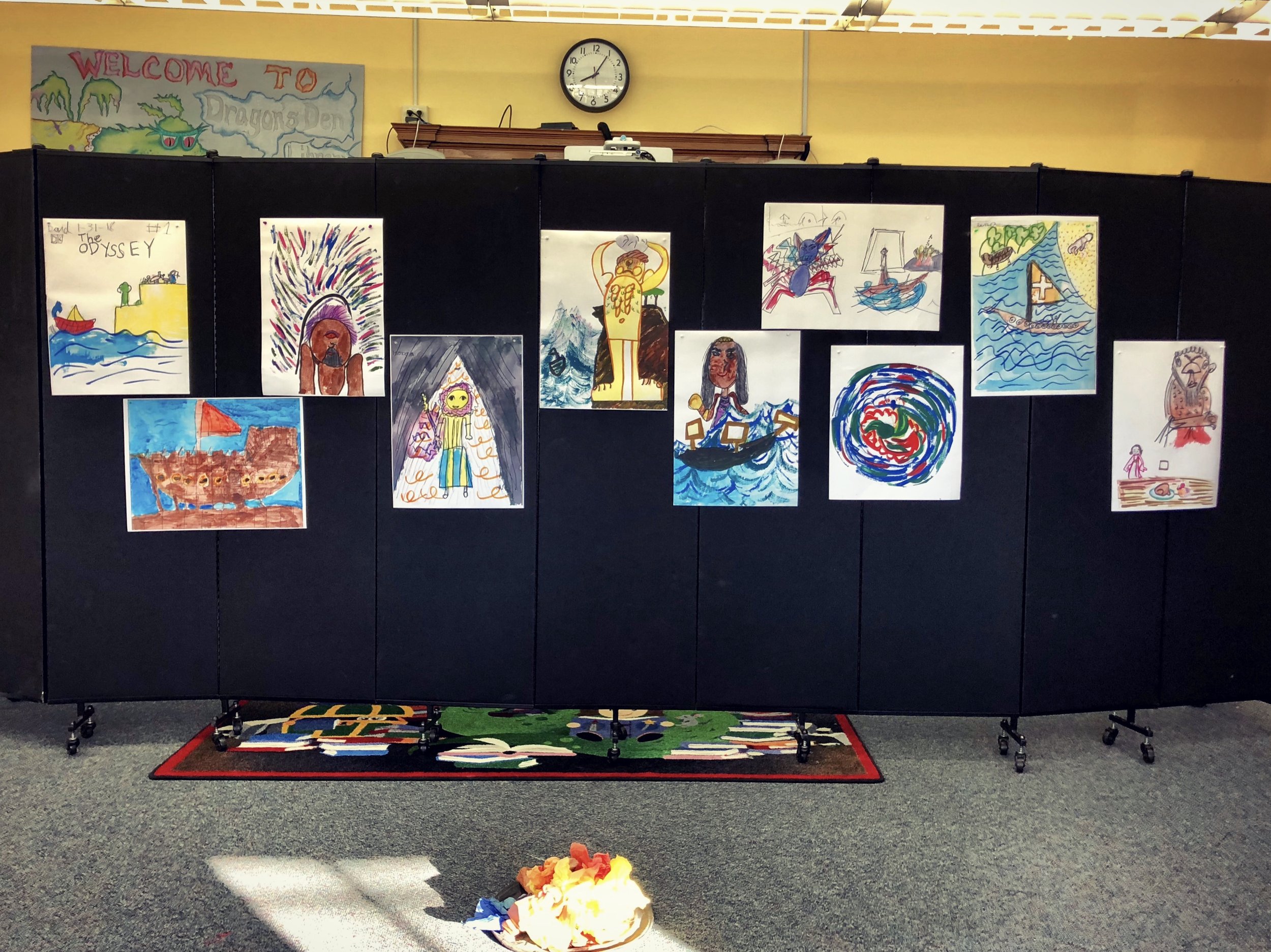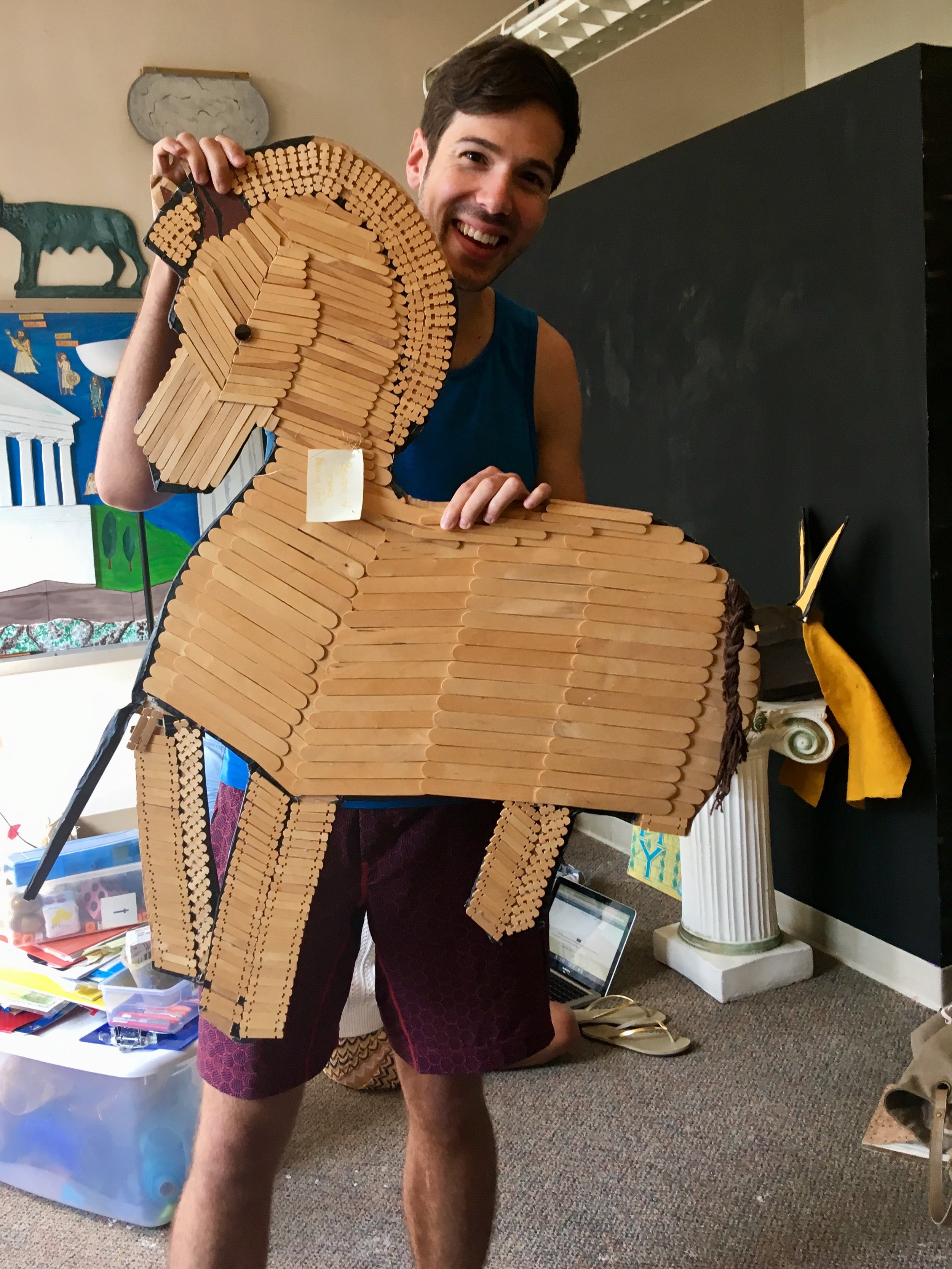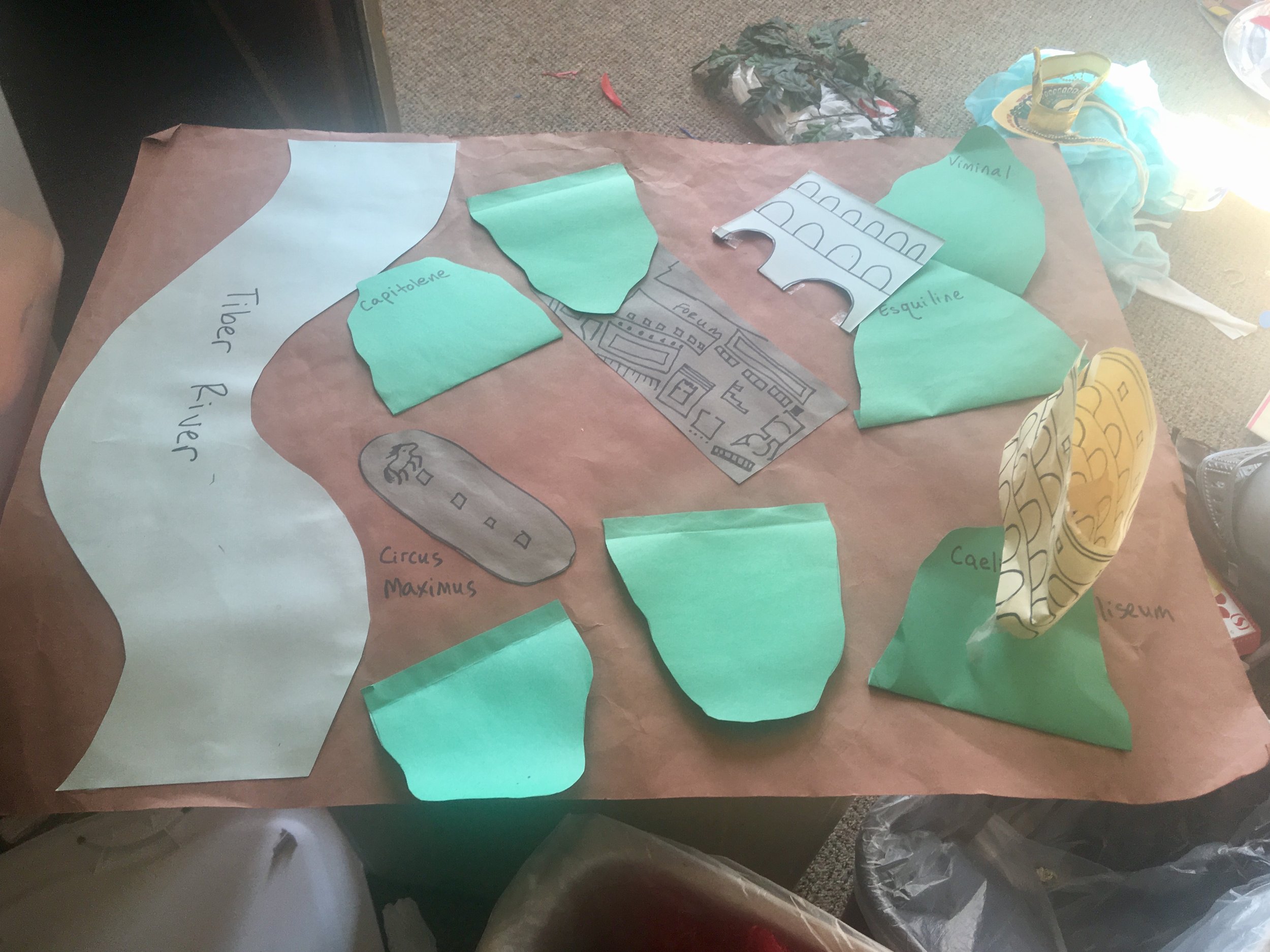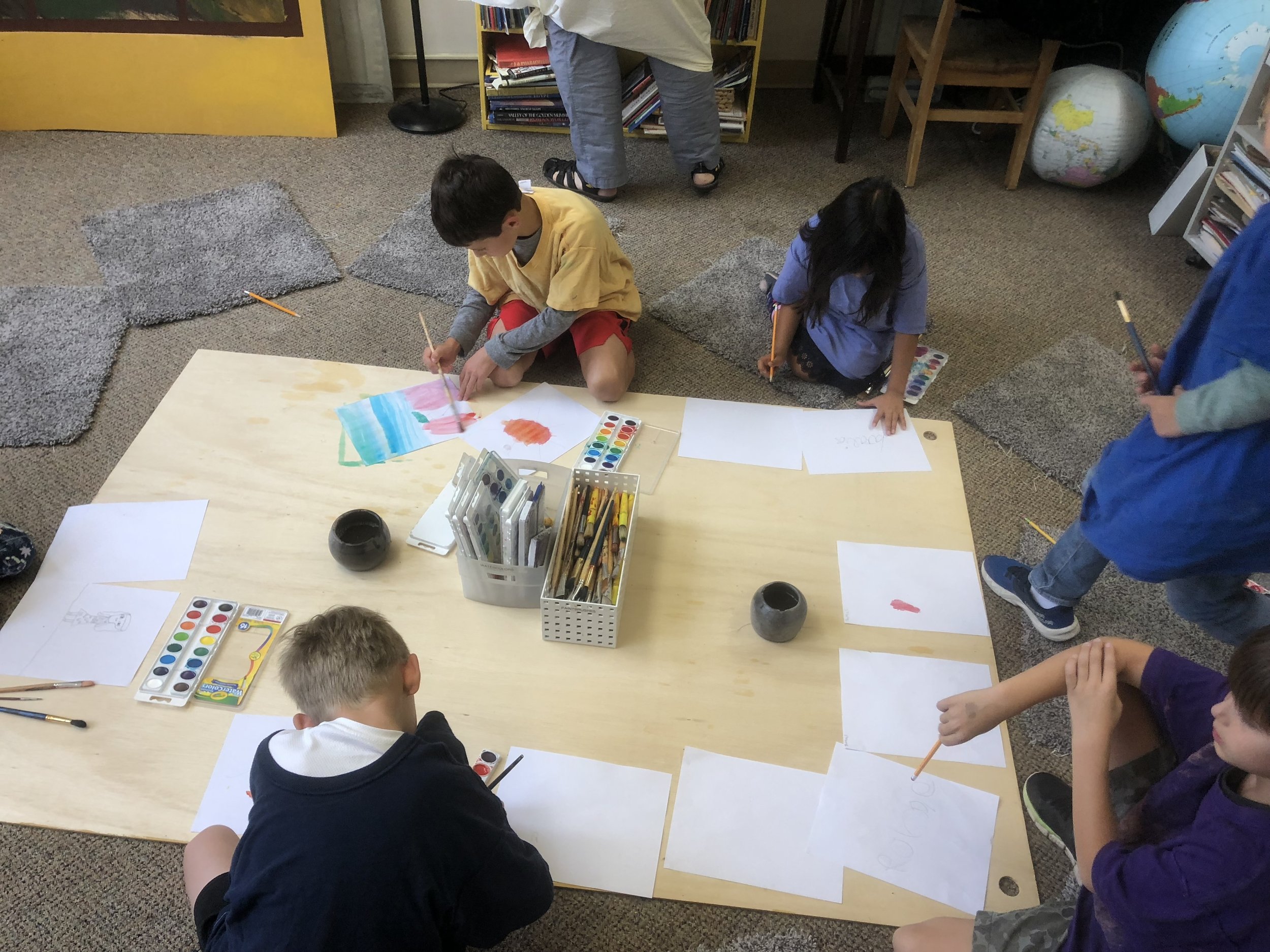GODS AND GODDESSES ACADEMIC CLUB
OVERVIEW
The academic objectives of Gods Club are to learn the history, geography, literature, government, art, architecture, science, and culture of the Egyptian, Greek, and Roman civilizations during ancient times. Emphasis is placed on main events, inventions, architectural and artistic milestones, mythology, development of written language, and the influence of these civilizations on each other and our present-day society. This is accomplished through a multi-sensory approach and a dramatic framework that sparks student interest. By assuming the roles of gods, heroes, and ancient mortals, students eagerly participate in activities, projects, and teacher-made games that teach content and strengthen readiness skills.
Much literature, primarily myths and fables, is read yearly. While listening, students draw content from the story or act out the narratives to enhance comprehension.
A conscious attempt is made to relate the technology available to the ancient peoples to the Simple Machines unit taught in the Lower School Science department. Mathematical concepts are explored through solving simple problems using Roman Numerals or Egyptian numbers. Decoding and encoding skills are strengthened by translating from or into Hieroglyphics or Greek.
Students start each unit by making maps to include key features of each region. The Fall semester is devoted entirely to Ancient Egypt. Students portray the gods and goddesses from Egyptian mythology. We begin 5,000 years ago and end with the last dynasty and the last pharaoh, Cleopatra VII. She is the character played by myself. Her family was from Macedonia (Greece), her husbands were Roman, and she ruled Egypt. Students create tombs complete with mummies, canopic jars, and hieroglyphics. During this unit, the students act out a mummification ceremony. Puzzles representing Osiris and his death reinforce the myth read in class. They sculpt a sphinx out of clay.
The Winter session covers Ancient Greece, and students take on new roles. They become the gods and goddesses from Greek mythology. The Trojan War is interpreted through dramatic theater by acting out the Illiad and Odyssey. In addition, students make models of the Trojan Horse. Comedy and Tragedy masks are designed, as well as thinking caps, to emphasize Greek contributions.
Finally, we end the year with the Roman Empire, where students take on the Roman names of their Greek characters. A class model of an aqueduct is built and tested. Students are challenged to build arches and other architectural elements unique to the Roman culture. Mosaics are created using tessellae in the tradition of ancient Roman art.
THE BIG IDEAS
The theme of the Gods Club is Ancient Egypt, Greece, and Rome. The central concepts to which the content is connected are the following:
∙ Myths are stories that combine elements of fact and fiction. In the days before scientific evidence, people in ancient times used mythology and their respective gods and goddesses to explain events that occurred in the natural world.
∙ Religion played a prominent role in the people's daily lives in these ancient civilizations.
∙ Ancient civilizations greatly influence our modern world through the foundations of mathematics, science, languages, art, architecture, and government.
∙ History can be viewed from multiple perspectives, each with a unique story.
∙ Geography factors into multiple facets of our daily lives, which affect trade and development.
∙ Political boundaries constantly change due to war, religion, and governmental mandates.
∙ Timelines provide order and sequence to historical events.
∙ Instilling a solid knowledge of vocabulary, structures, and events related to these ancient histories provides a common language in modern society.
∙ Key architectural structures, elements, and inventions of these ancient cultures are still used today.
∙ Hieroglyphics, Roman numerals, and the Greek Alphabet are simply a set of symbols that a joint group has designated with meaning:
∙ Through the study of artifacts, scientists and historians can put together the story of the past.

